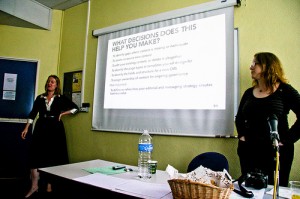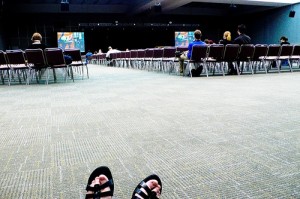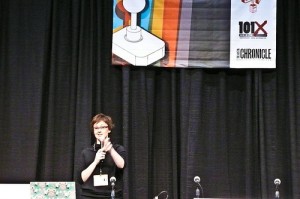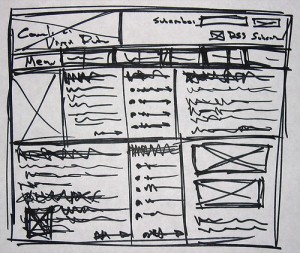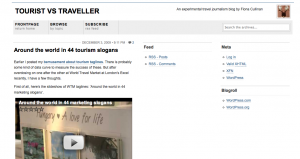If (like me) you have been tuning in to the rise of content strategy, but feel a bit lacking in actual practical know-how, then this collection of soundbites and voxpops – wrung by me from the mouths and Twitter accounts of the world's leading content strategists – is truly the badger's nadgers.
At last month's Content Strategy Applied conference, I hunted down asked the keynote speakers, presenters, panellists and attending experts for one single tip they could give that would help people (like me) apply content strategy to their web work. There was also some follow-up Twitter conversation on the subject, which led to a few bonus tips making the final cut.
The full list of interviewees and contributors, with a quick summary of their one piece of advice, follows beneath the video. Which is here:
I'm extremely grateful to the following for contributing:
1. Kristina Halvorson, Brain Traffic: Start asking lots of smart questions about your content. This also helps shift the conversation around it.
2. Ken Yau, Baddit: Ask why! Be a pain in the butt. There should be a justification for content existing.
3. Fiona Perks, Bright Stuff Communications: A good content strategist never forgets about the end user.
4. Julie Mahoney, LBi: Always incorporate different channels – social media, mobile devices.
5. Richard Ingram, Ingserv: Use context to shape your content. Don't just find out who your audience are. Discover the circumstances and emotions behind their interest.
6. Amy Laskin, Ogilvy: Don’t make assumptions about your users; they will surprise you every time.
7. Rob Hinchcliffe, Hour of Play: Find your hook: immerse yourself in your community, listen to what they're saying, find the common themes, and then build a narrative around those themes.
8. Nikki Tiedtke, eBay Europe: Before anything, first try to find out who your customer is. Not just users but the client. Understand what they need and why. Don’t jump into solutions.
9. Jonathan Kahn, Together London: Content strategy is half collaboration, advocacy, and organizational change – the deliverables and techniques are useless on their own.
10. Steve Wilson-Beales, MSN Entertainment: Find out what your audience is searching for, what topics are trending on social networks, use autosuggest tools… CS is replying to that need and allows you to create an editorial layer.
11. Kath Ludlow, Bright Stuff Communications: Think about content as the stuff that people are going to use, enjoy, keep, share, react to and act upon. Focus on delivering a strategy that delivers this response on a long-term basis. Then you can't go wrong.
12. Danny McCubbin, Jamie Oliver online: Be transparent in the content you put up on site. Don't intervene too much in the community – your audience will tell you if you have got it right or wrong. Be authentic.
13. Chad Butz, Bourne: Get to know the business and marketing objectives inside out and relate all you do back to those, from selling in to analytics.
14. Seth Bindernagel. Mozilla: Localisation: ask do you intend your content to meet a global audience?
15. Lucie Hyde, eBay Europe: Don’t think multilingual think multicultural – language is just the start of localisation.
16. Charlie Peverett, iCrossing: Creating page tables? Make your life a whole lot easier – use mail merge http://bit.ly/gQ7LbS
17. Rahel Bailie, Intentional Design: It’s all about the metadata – it governs everything.
18. Jeff MacIntyre, Predicate LLC: Every content strategist is, at minimum, a professional communicator. This entails two requirements of you. One, never sacrifice clarity on the altar of the buzzword, and two, critical thinking is mandatory – develop a considered point of view (and rationale) for the trends and ideas that matter most to you in your work.
If you liked this video, please do share it. You might also find this CS Applied conference post I wrote for Firehead web recruiters useful: Content strategy in 60 tweets.
Hire/commission me: fiona [at] fionacullinan.com






